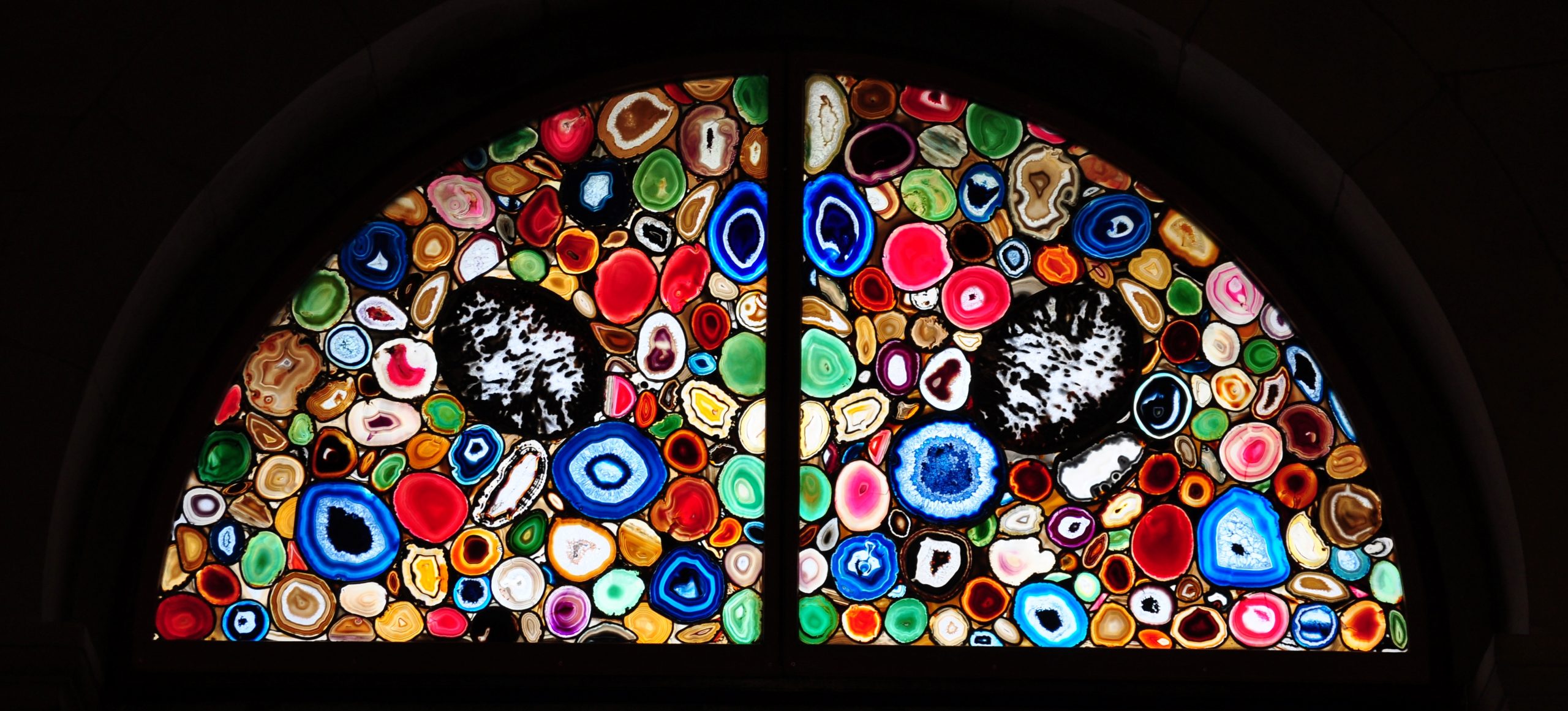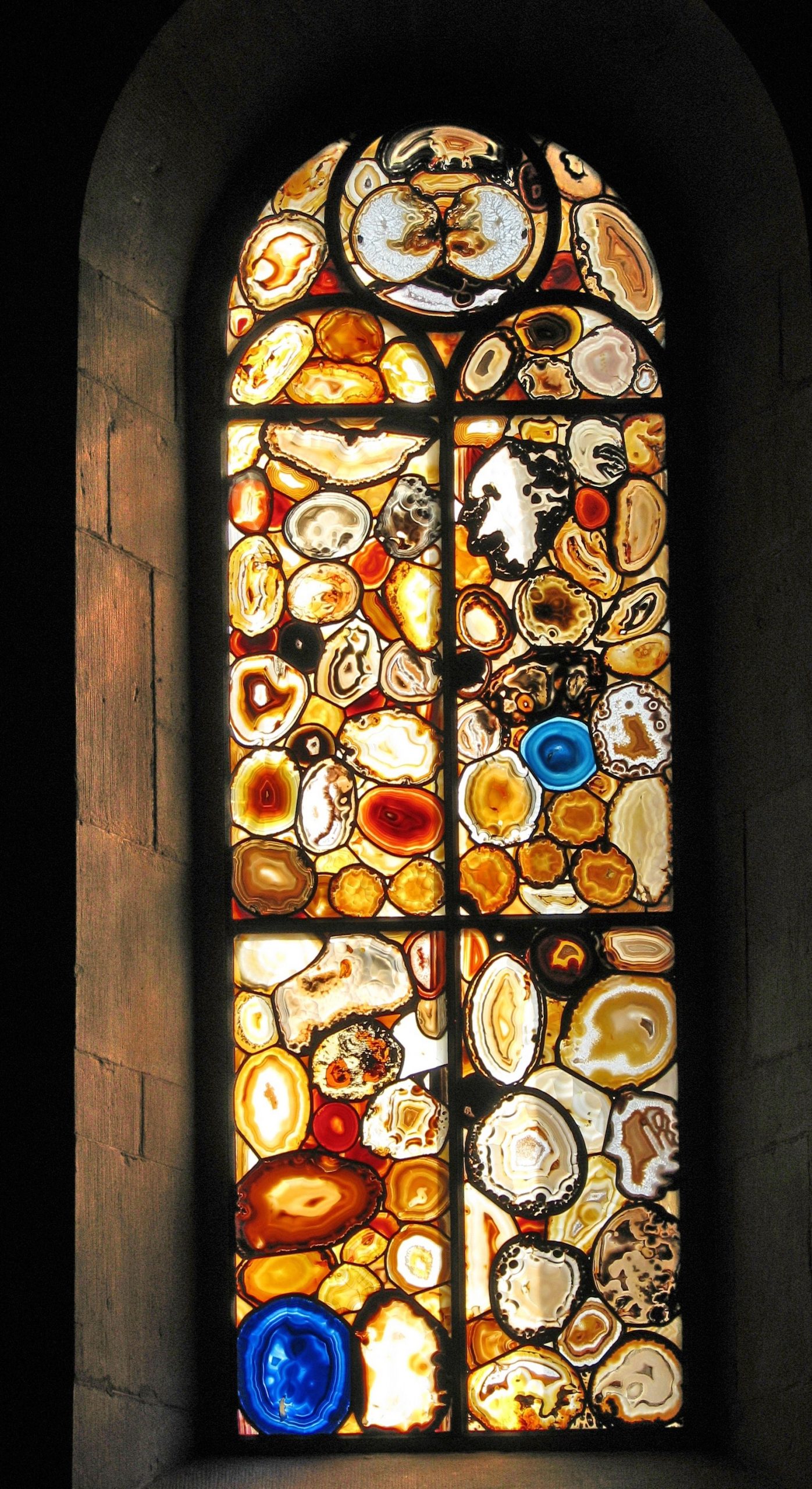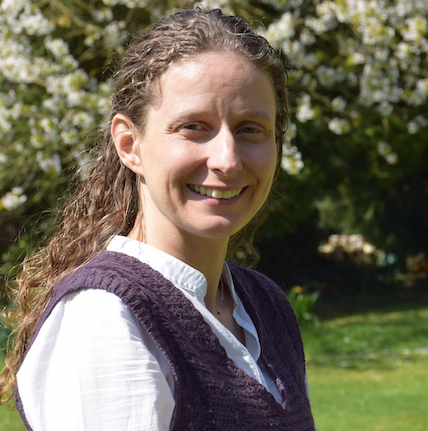
Grossmünster in Zürich By Roland zh (Own work) [CC BY-SA 3.0], via Wikimedia Commons

Interior view of Grossmünster in Zürich By Roland zh (Own work) [CC BY-SA 3.0], via Wikimedia Commons
The first window I encountered in the Grossmünster was a semicirclular design, laid out in a mirror image pattern using reds, greens, blues and browns. The other six windows are long panels, each one using a narrower palette of colours than the first. I was fortunate enough to be there on a sunny day, and the overall effect was completely stunning. The entire western part of the church has a dim subterranean feeling, and the complexity and colours of the patterned rock make each window completely unique. I hurried to follow my friend who was making a beeline for the Giacometti windows, but I returned several times to take in more of the detail of Polke’s simple but fascinating designs.
As a scientist, I felt quite at home with the concept of using geological samples in a church building. It felt entirely appropriate to find such beautiful and ancient things in this context. These works of art took millennia to form, and were finally revealed by the skill of dedicated craftspeople for the glory of God. It’s a more subtle approach than the church Sarah Losh built in Wreay, but has a similar effect – bringing the praise of people and creation together in one place.
[1] Quite a lot of agate is pale in colour, but it can also be dyed.

© Ruth Bancewicz, Nigel Bovey
Ruth Bancewicz is a Senior Research Associate at The Faraday Institute for Science and Religion, where she works on the positive interaction between science and faith. After studying Genetics at Aberdeen University, she completed a PhD at Edinburgh University, based at the MRC Human Genetics Unit. She spent two years as a part-time postdoctoral researcher at the Wellcome Trust Centre for Cell Biology at Edinburgh University, while also working as the Development Officer for Christians in Science. Ruth then moved to The Faraday Institute to develop the Test of FAITH resources, the first of which were launched in 2009. Ruth is a trustee of Christians in Science and on the advisory council of BioLogos.




